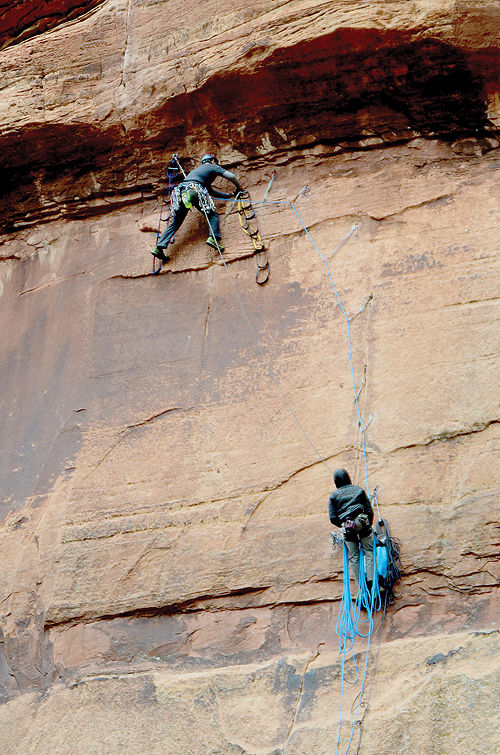The best time of year to visit Zion National Park is after Thanksgiving. The weather is good, cool at night and warm during the day. The crowds are gone. It’s prime time for wildlife and animals are out nearly begging to be photographed.
But don’t think you’ll have the cliffs and rock formations to yourself. It’s busy. Or, at least it feels busy given the circumstances. The shuttle buses have been stored for the season and people are allowed to drive through Zion Canyon. During the high-use season the road is closed to traffic and people must use the shuttle service. The shuttle was established in 2000. From the Zion National Park website: “In 1997, visitation was 2.4 million and increasing. The shuttle system was established in 2000 to eliminate traffic and parking problems, protect vegetation, and restore tranquility to Zion Canyon.”
Zion is a big park, but road access is limited. That congregates visitors in a relatively small area. The shuttle system makes the situation during peak season tolerable. Hikers and climbers can ride the shuttle to a trailhead and later in the day catch the shuttle back to the parking lot. Sightseers can view the park from the shuttle or get off and on as they please. Shuttles run every few minutes.
In the off-season popular trailhead access is a problem. Right now there are several construction projects. Some parking lots are closed. Those that are open fill early. People park along the roadway, which is technically not allowed. Rangers apparently turn a blind-eye to parking along roadways this time of year, unless someone is parked in the driving lane. Then citations are issued and a tow is possible.
While winter is not the prime rock climbing time in Zion, there are still lots of climbers. Daylight and warm days are short. Information Specialist Mathew Dempsey says multiple climbing permits are issued daily and people still come from all over the world to climb Zion’s sheer rock walls. While standing in line to ask a question a couple from France was in front of me, trying to determine which route they wanted to climb.
Dempsey says most climbers are interested in a relatively short climb, since days are short. By 3 p.m. most climbers are on their way down the cliff. You don’t want to be caught on the wall overnight. It gets cold. One night my thermometer registered 20 degrees.
There are two large animals in the park, mule deer and bighorn sheep. Both are relatively easy to spot. Deer can be seen anywhere. Just look. On one drive up Zion Canyon I saw probably 50 deer including several nice bucks. The rut is still going on, so it’s possible to see a tussle between bucks. At one point I came upon a nice 3-point buck looking intently away from the road. He paid no attention to me as I parked and walked back up the road toward him.
Then I saw what he was looking at, a very large buck very intently following a doe. After a few minutes the small buck wandered off and found a doe of his own to follow around. However, that didn’t sit well with the big buck and he came running toward the smaller buck. There was no need to show dominance, as the small buck immediately turned and ran. He was at least smart enough to know he was no match for the larger buck.
The bighorn sheep live in the hills above the tunnels. Sometimes they are near the road, and they too are relatively easy to get close to. When photographing wildlife is it preferable to stay in your vehicle, when possible. Don’t park in the middle of the road. Use turnouts. The vehicle acts as a blind and usually allows you to get closer than you can on foot. Never approach wildlife. Since animals are not hunted, they have little inherent fear of humans. While it seldom happens, animals can attack a person. Never forget wild animals are wild. People are killed by deer every year somewhere in the United States. Does are often more dangerous than bucks. They will stand on their hind legs and fight with their front legs. Their hooves are very hard and sharp.
Campgrounds close gradually. As need declines campers are congregated into a smaller area. One loop in one campground is open year round. On my recent trip there were numerous campers, but the one open loop was not full. All camping is first-come, first-served. If you’re in a tent, make sure you have a very warm sleeping bag. If you’re in an RV make sure the furnace is in good working order.
Prime time to visit Zion National Park is now

rock climbing web
